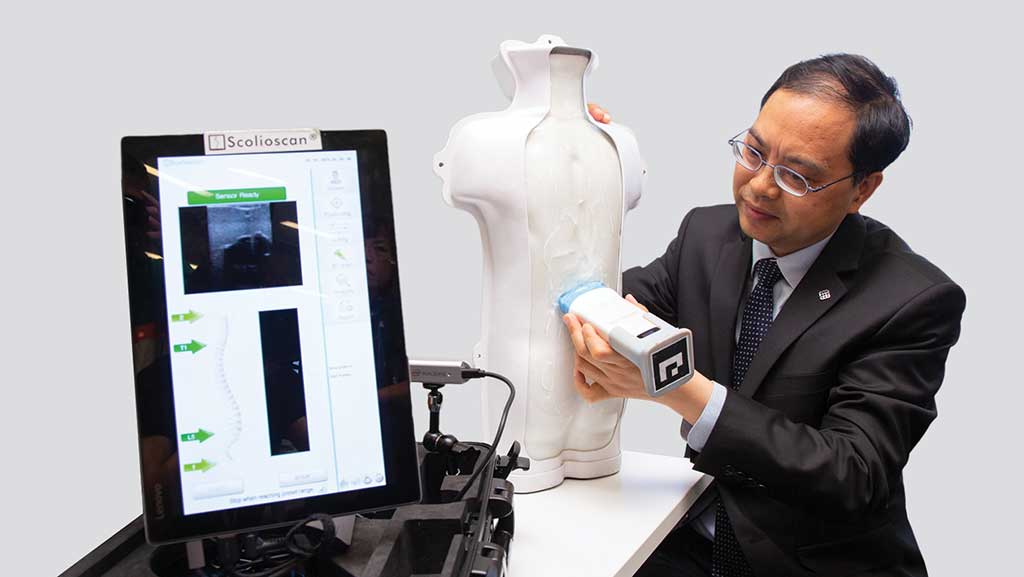Ultrasound Reduces Unnecessary Scoliosis Screening X-Rays
By MedImaging International staff writers
Posted on 15 Jul 2021
Using dedicated ultrasound to screen schoolchildren for scoliosis prior to specialist referral can help reduce radiation exposure, according to a new study.Posted on 15 Jul 2021
Researchers at the Chinese University of Hong Kong (CUHK), Nanjing University (NJU; China), and Hong Kong Polytechnic University (PolyU) conducted a prospective diagnostic study to evaluate the accuracy of ultrasound in determining the threshold of specialist scoliosis referral that requires X-ray for children screened positive with the scoliometer and Moiré topography. The study included 442 schoolchildren with a mean Cobb angle of 14.0 ± 6.6°.

Image: The Scolioscan device used for ultrasound screening in Hong Kong (Photo courtesy of PolyU)
The results showed that ultrasound could predict the correct referral status (as confirmed by X-ray), with a sensitivity of 92.3% and a specificity of 51.6%, with positive and negative predictive values of 29.0% and 96.9%, respectively. The finding support using ultrasound to determine scoliosis referral status, with a possible 50% or more reduction of unnecessary radiation. The study was published on June 28, 2021, in Ultrasound in Medicine and Biology.
“Ultrasound could be considered for incorporation into the scoliosis screening program for maintaining radiation exposure as low as reasonably achievable, especially for immature participants,” concluded lead author Henry Pang, MD, of CUHK, and colleagues. “Ultrasound use in scoliosis could be extended by establishing a model for predicting the Cobb angle based on the angle of spinous processes. However, more studies would be needed to confirm this.”
Scoliosis is a condition in which a person's spine, on an X-ray viewed from the rear, may look more like an "S" or a "C" than a straight line. It is the most common spinal deformity in children, most often diagnosed between ages 10 to 18. In Hong Kong, scoliosis screening programs follow a protocol referring children screened positive with a scoliometer and Moiré topography for confirmatory radiography. But despite being highly sensitive (88%), the screening program was found to have a false-positive rate of over 50%, which could lead to unnecessary X-ray radiation.
Related Links:
Chinese University of Hong Kong
Nanjing University
Hong Kong Polytechnic University














